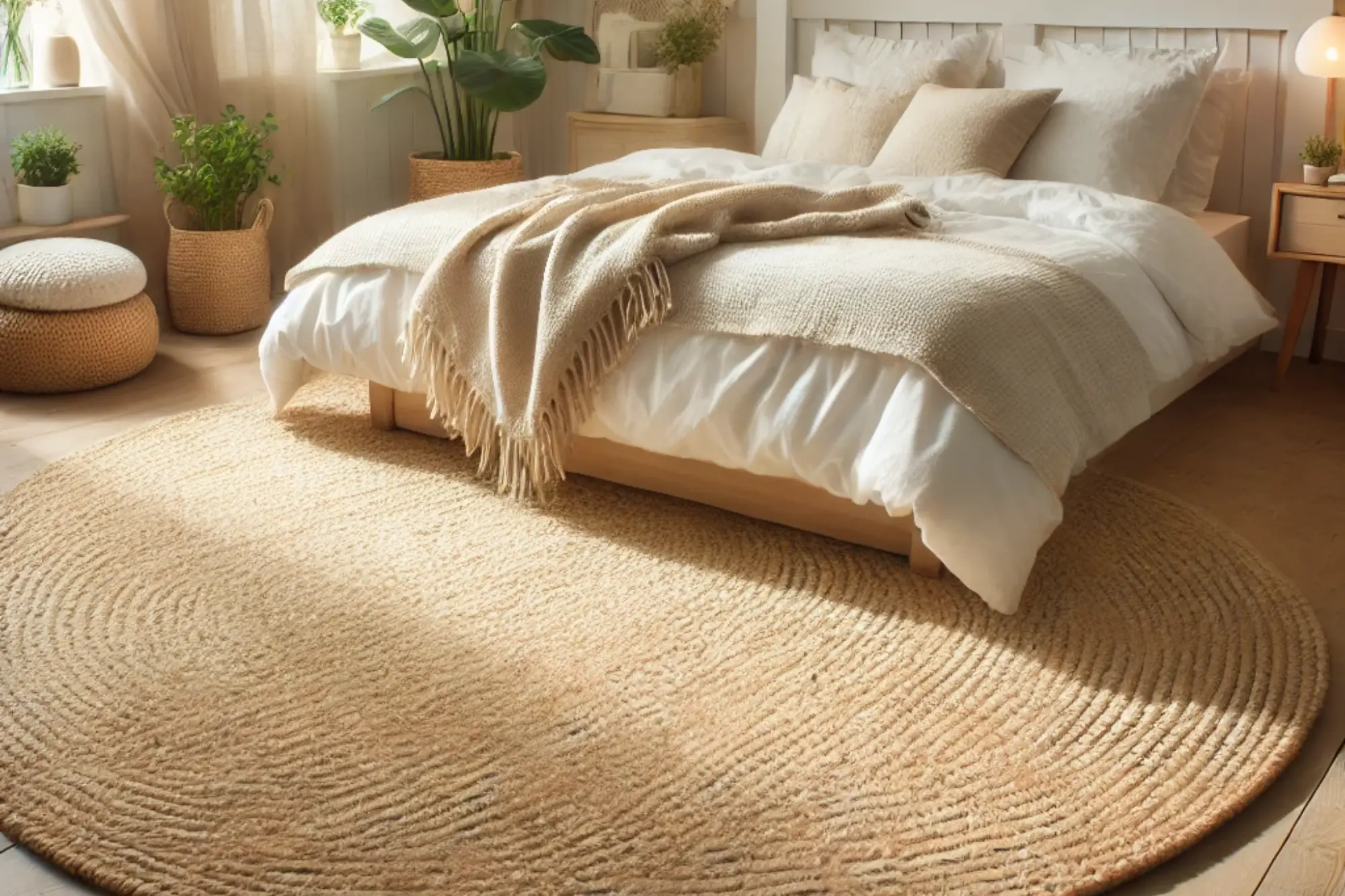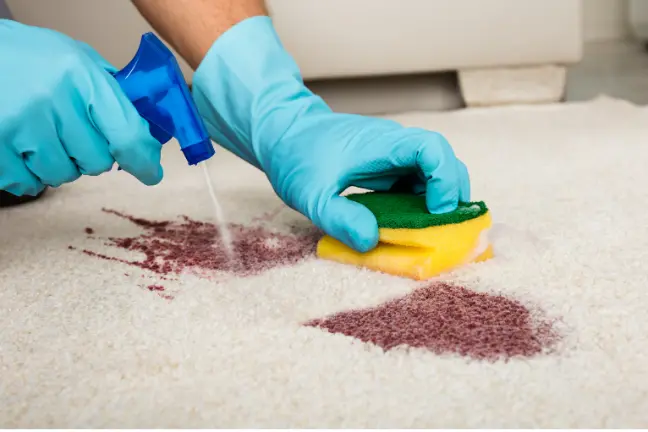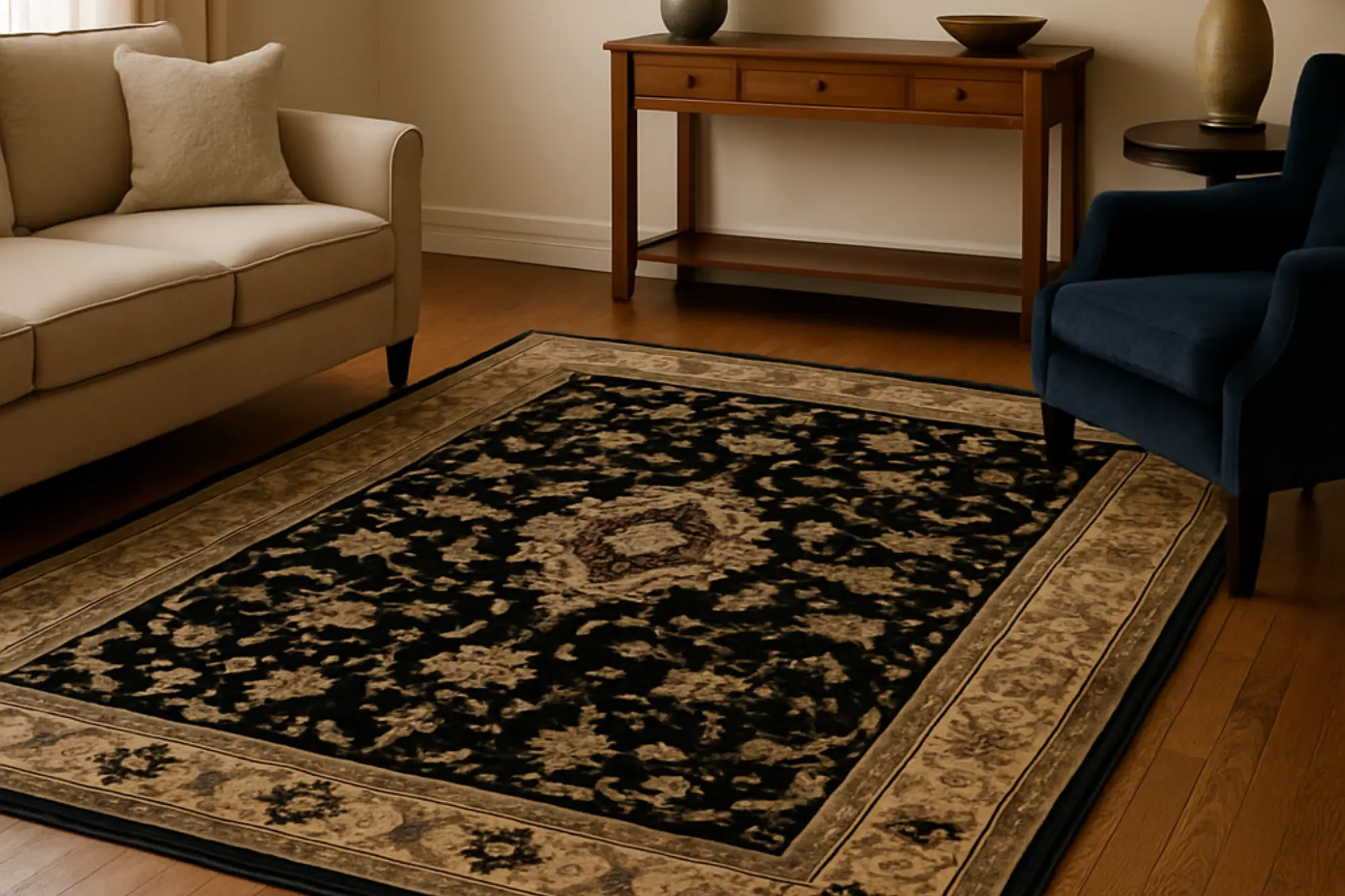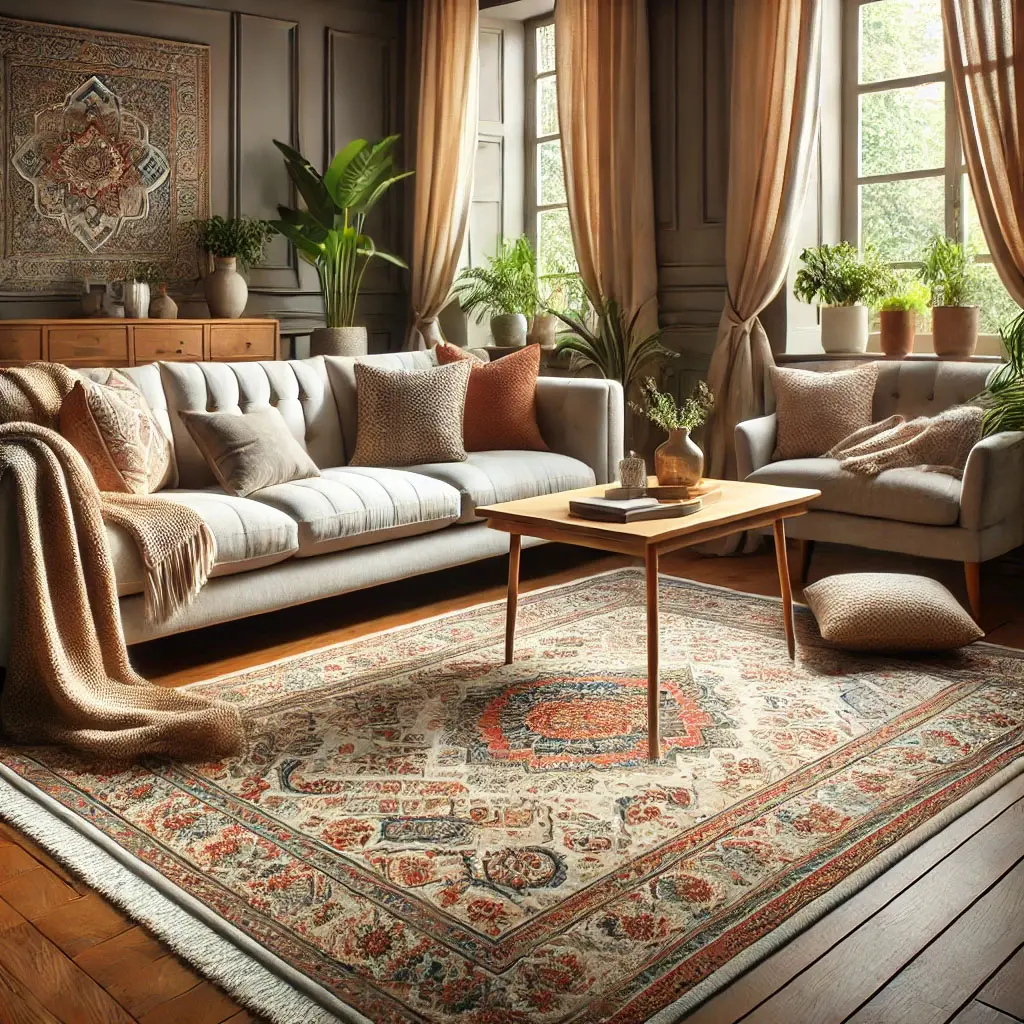Determine Oriental Rugs Value
Determine Oriental Rugs Value

Affordable handmade rugs are a valuable item that everyone is considering to fit into their home decor budget. These amazing hand-knotted creations come from a long way from the Middle East and the artisan to your very own living room. Each one of these rugs has a unique and particular design that took a lot of time and dedication to be finished, which makes it a valuable artifact that everybody should consider. That being said, the first thing you need to know is that Oriental hand-knotted rugs are more expensive than industrial machine-made rugs for many reasons explained in this article called Why Oriental Rugs Have Abrash? . This, of course, doesn’t mean that you won't be able to find affordable Persian rugs in the market or any authentic Oriental rug with excellent quality or very beautiful intricate designs for a reasonable price.
Many people get confused when they’re buying handmade rugs and sometimes they get overcharged for rugs that are not worth that price because they don’t actually know how to evaluate and identify all of the significant factors that determine the price of a rug. Further, prices change every year depending on available supply and demand. Nowadays, you also have to add the fact that price ranges will change due to what people want and what is “in fashion” or market trends.
Keeping this in mind, let's talk about a list of facts you must be aware of and have at hand when you’re looking for an affordable Oriental rug with a high-quality value. There are seven factors to consider:
1. Knot Density
2. Materials Used
3. Design Elements
4. Colors, blending, and dye types.
5. Age
6. Rug Conditions
7. Demand and Availability
1. Knot Density: Knot count is when you numbered the nodes or knots per inch square. To do this, check the back of the rug and either do it by eye, using a measuring tape, or using a quarter coin. Count in each direction, in a vertical and horizontal way, and finally multiply these 2 figures together. Make sure that you find nodes' colors by themselves, if there are 2 colors per node then this particular rug is not fully depressed and you are seeing both sides of a knot. When having 2 colored nodes you must divide by two to get the actual knot count. Further, you should proceed and do this in different parts of the rug to be sure of the knot count result.

Points | Knot Density |
10 | 690 - above |
9 | 575 - 685 knots |
8 | 415 - 570 knots |
7 | 320 - 410 knots |
6 | 250 - 310 knots |
5 | 165 - 240 knots |
4 | 125 - 160 knots |
3 | 85 - 120 knots |
2 | 60 - 80 knots |
1 | 30 - 55 knots |
0 | 0 - 30 knots |
2. Materials used: There are 3 types of material used on the pile and foundation of Oriental rugs such as wool, cotton, and silk. These types of materials differ in quality, for example, there is Kork wool, fine wool, dead wool, low-quality wool, good wool, Std. Wool w/ without silk, Shanghai wool without silk, cotton, mercerized cotton, silk. The better quality & combination of materials used on the pile and foundation, the better the value of the rug.
Points | Materials |
10 | Silk Foundation / Silk Pile |
9 | Kork Wool on Silk / Fine Cotton Pile |
8 | Fine Wool w/without silk / Cotton Pile |
7 | Good Wool w/without silk / Cotton |
6 | Shanghai Wool / Cotton |
5 | Wool / Wool |
4 | Mercerized cotton / Low-quality wool |
3 | Dead wool / Cotton |
2 | Dead wool / Wool |
1 | Dead wool / Jute |
0 | Cotton foundation / Jute Pile |
3. Design Elements: There are several designs when referring to hand-knotted rugs: Modern/Contemporary , Tribal , Allover , Pictorial , Historical , Garden/Floral , Traditional/Classic , Prayer , and Geometric . Most of them have a medallion in the center and some designs are all-over without a medallion. The more details you find in a design more valuable it is.
Points | Design |
10 | Throughout detailed curvilinear pattern on the entire background |
8 | Throughout detailed rectilinear or curvilinear patterns |
7 | Portraits, detailed pictures or figures / floral curvilinear designs |
5 | Reasonable curves / angles / all-over design / plain areas |
4 | Less detailed curvilinear / rectilinear design / plain spots |
3 | Repeating patterns and simple forms like a tribal Turkoman |
2 | Carved Chinese 120L or above |
1 | Indo Aubusson/ Savonnerie |
0 | Plain / One color rug |
4. Colors, blending, and dye types: Oriental hand-knotted or hand-weaved rugs are made with vegetable dyes from seed oils and other natural plants and elements. This element’s quality can be seen from how the rug has a bad antique wash or one of the colors pops out in a bad way, the rug has been overly toned down to how well several colors blend in perfect harmony, beautiful antique tones, top quality vegetable dyes or chrome dyes are being used.
Points | Colors |
10 | 10 - 15 color shades combined in perfect harmony / Top quality vegetable dyes used / Antique tones |
8 | 10 color shades combined in perfect harmony. Chrome dyes used. |
6 | 6 or more color shades combined naturally / no colors jump into the eye. |
4 | 4 or more colors blend well |
2 | 4 or more colors blend well and one does not integrate and jumps into the eye like a hot or electric color. |
1 | 3 or more electric/hot colors that do not blend together well / bad antique wash / overly toned down. |
0 | Colors with chemical washing / sun-faded colors / no possible to be repaired / one or two colors top. |
5. Age: rare antique rugs are considered really valuable, but this also depends on how well preserved the rug is, its condition, details in the design, also where it was made, and other factors that apply too. Only because a handmade rug is antique does not mean that the price will go incredibly up.
Points | Age |
10 | 100 years old - above (categorized as antique) |
8 | 60 - 75 years old (categorized as semi-antique) |
6 | 40 - 60 years old (categorized as semi-antique) |
4 | 30 - 40 years old |
2 | 20 - 25 years old |
1 | 5 - 15 years old |
0 | Recently made (categorized as new) |
6. Rug conditions: There are several condition terms used to talk about handmade Oriental rugs. They go from good condition, with several repairs, professional repairs, some signs of age, some worn areas, evenly worn areas, low pile, to excellent condition, with no worm areas, and no repairs needed. Finding a rare antique handmade Oriental rug in excellent condition for a fair price is a catch that you can’t let go of.
Points | Condition |
10 | “Like new” Excellent conditions, no repairs, no worn areas. |
9 | Excellent conditions / only fringe shows some age conditions / no repairs needed/ Full pile |
8 | Excellent conditions / hasn’t been washed for years / |
7 | Excellent condition / Some sign of age / some worn area |
6 | Very Good condition / Evenly worn / a few professional repairs |
5 | Very Good condition / some sign of age / Some low pile |
4 | Good condition / Some low pile / some repairs may be needed/missing fringe. |
3 | Evenly Low pile / some stains that can be removed/worn areas |
2 | Low pile / no serious stains / severe signs of aging and can’t be placed in high traffic areas in the house. |
1 | Needs major repairs/sides or ends of the rug are lost / permanent stains / major re-knotting may be needed. |
0 | Cracking foundation / Beyond Repair. |
7. Demand and availability: Within the US there are several Persian rug stores and dealers in the market that will either be fair to take advantage of a customer because they don’t have the information needed to buy a top-quality rug. I would recommend, as I said in 10 Important Tips When Buying Oriental Area Rugs , checking out the best-reviewed store, finding someone that has at least 10 years or more in the rug market, and finally being sure and examining the whole store looking for related quality products, even if you are buying only one rug. When talking about demand and supply you must take into account whether their products are low-end mass-produced rugs, average quality, high quality, rare or antiques not being produced in any real quantity.
Points | Demand & Supply |
10 | Very unique design / rare / antique |
8 | Unique / some rare elements / antique |
7 | Low production semi-antique Oriental Rugs |
6 | Semi-antique rugs still on production |
5 | Low quantity production on new high-quality rugs |
4 | Still in production high-quality rugs |
3 | Good quality rugs still in production. |
2 | Average quality type of rugs still being produced |
1 | Bazaar types of rugs still being produced. |
0 | Massive production design |
Once you have collected and written down all the points for each category presented above, you will multiply each point in this way: knot density x 11 / materials x 7 / design x 6 / Color blending x 5 / age x 3 / condition x 2. The result must then be multiplied by the commodity market price which is constantly changing due to supply and demand. The final number will be the price / per square inch/ for that rug, all you need to do now is multiply the size of the rug by the final number. This will generate a more standard, normal retail price.
Once you have a little bit more experience in this matter, you will also find out what dealers are selling their products, more or less, of what they actually worth, but you have the power to decide what to do with the information you’ve just learned. If it’s a good deal and you’ve just found an amazing affordable Persian rug then you won’t be deceived because you already know its worth.
Let’s make an example of an exceptional tree of life signed Tabriz Persian rug:
Categories | Characteristics | Points | Results | Notes |
Knot density | 160 KPSI | 4 x 11 | 44 | |
Materials | Kork Wool | 9 x 7 | 63 | |
Design | Detailed throughout | 8 x 6 | 48 | Pictorial design |
Colors & Blending | 10 or more colors blending in harmony | 8 x 5 | 40 | |
Age | 20 - 25 years old | 2 x 3 | 6 | |
Condition | Excellent “like new” | 10 x 2 | 20 | Excellent Shape |
Production and demand | Very Unique, rare, 4 seasons/ low production | 8 x 2 | 16 | Very unique but not antique |
Total: Points sum x 0.CMP x size 10x13 | 220 x 0.4132 = 90 PSI | |||
Commodity Market price is around 0.4132 | ||||
90 PSI x size (10x13 = 130) → 90 x 130 | Final | 11.700 $ | ||
This is only an approximation, remember that you can compare more prices thus out there we can find many different styles, designs, or conditions, but yet again this formula can also give you a general idea of retail prices. furthermore, it is important to add that the list above it’s a guiding formula for you to have an idea of what elements to consider when buying Oriental handmade rugs, the characteristic of a rug may change in different ways that you need to consider when setting the points in each category. For example: when talking about the condition, if it happens you find a rug that may be in excellent shape, with no repairs needed, almost “like new”, but missing fringes or salvages, You could say this particular rug has 10 points in conditions BUT it may not be the case since it still has some other flaws that are not categorized on the list above, it could probably be 9 or even 8 points. What I’m trying to say is, It’s all relative. The idea here is not to go blindfolded into Oriental Rug Stores but to have all the information you need to get the best deals in the rug market.
Explore more trending collections!
Share:




